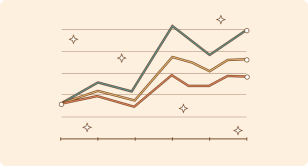Why Guaranteed German Pension Products Just Aren’t Worth It
Guarantees sound like a great thing — but we will show you that they can also be a bad idea, especially when it comes to pension products.Updated on 8 January 2025

Our conclusion: Allianz Index Select and similar products¹ are in reality not the stock index participation strategies they are being billed as, but rather option arbitrage strategies. Such products are not suitable for long-term investors, given their high cost and low returns, and the uncertainty of whether even modest returns could hold up over the medium to long run. Figure 1 shows you the essence of the story: your money is stable but will not grow, unlike the index which is unstable but will grow.



